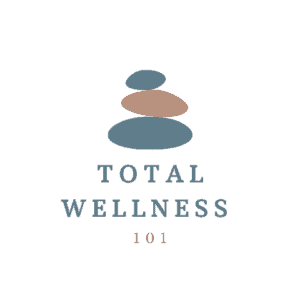High stress levels are becoming increasingly prevalent in today’s society. Some people experience a normal amount of stress while others may feel consumed by it or have a clinical diagnosis. No matter the category, prolonged periods of stress are detrimental to your overall wellness.
Many look first to clinical interventions or complicated solutions to their stress and are not aware of the power that you have within your own body to reduce stress. Breathing exercises are some of the most basic and easy measures you can take for stress relief and they are quite effective. They allow you to enter into the present moment and feel control over something that is typically involuntary. Breathing for stress relief is a free method that you can do anywhere while also utilizing other interventions if necessary. Here I will lay out some general tips when it comes to breathing as well as some specific exercises you can try.
Diaphragmatic Breathing
Just like how it sounds, diaphragmatic breathing involves utilizing the diaphragm more when you breathe. This is also known as deep breathing and is utilized in meditation and yoga for example. This is more of a way you should breathe than a specific exercise. A 2017 study showed that diaphragmatic breathing significantly reduced cortisol levels in the body, which is the hormone that is produced in response to stress.
If you suffer from chronic stress or find yourself in a stressful situation, one of the first things you should do is check on your breathing. Some people tend to breathe more with their chest and take rapid, shallow breaths. This is more associated with your sympathetic nervous system which is responsible for your stress response. What you want to do is access your parasympathetic nervous system which does the opposite. This branch of your autonomic (or automatic) nervous system creates a relaxation response. One way to activate this branch is through deep breathing into your belly and extending your exhale. Breathing in activates the sympathetic system more while breathing out activates more of the parasympathetic system.
One way to practice this type of breathing is to sit straight up or lie down and to place your hands on your belly and your chest.
- First, breathe in through your nose and try to push your air down low. You should feel your belly fill with air. The hand on your chest should barely move if at all.
- Once your belly is full, exhale through your mouth making a “whooshing” sound. Your belly should start to shrink and you should feel your abdominal muscles activate some near the end. You can do this for however long you would like throughout the day.
Through continued practice, you will find yourself breathing more into your stomach without even thinking about it. This alone will give you greater control over your body’s stress response.
4-7-8 Breathing
I learned this breathing exercise from Dr. Andrew Weil, a leader in natural and integrative medicine. The numbers 4-7-8 refer to how long you will spend on each segment of the exercise. Throughout this entire exercise, you will have the tip of your tongue touching the gum right behind your upper front teeth. So when you exhale through your mouth, the air goes around your tongue on each side. Here’s what you do:
- First, you will breathe in through your nose to the count of 4, filling your belly.
- Next, you will hold the breath to the count of 7.
- Lastly, you will exhale through your mouth making a “whooshing” sound to the count of 8.
- Repeat for a total of 4 breaths.
This can be done multiple times throughout the day but is especially useful during times of acute stress. Some also use this as a way to relax at night before bed. So try it out next time you want some stress relief!
Box Breathing
This is also known as square breathing, and is a controlled breathing exercise for performance and stress relief. It has also been made popular by its use with U.S. Navy Seals to prepare them for stressful situations. It is very simple and just involves breathing and counting to 4. Here is a graphic to help you understand:
This can help you to see how quite literally, this exercise can be thought of as a box or square. Here are the simple steps:
- You will inhale through your nose for 4 seconds.
- Hold the air for 4 seconds.
- Exhale for 4 seconds.
- Hold for 4 seconds before taking another breath.
If you get dizzy, take a break. It may take some getting used to. However, you will ideally want to complete 4 rounds of the Box Breathing method. Similar to the 4-7-8 Breath, this can be used during stressful situations or at night to aid sleep. Try it out and see how you like it!
Don’t Forget to Breathe!
Breathing for stress relief is so simple yet so effective! Don’t underestimate it. You will see immediate benefits from these exercises but the real benefits come from continued practice. That is because you will start to automatically breathe deeper and be more present with your body. This will allow you to progressively give more power over to your parasympathetic nervous system that is so often dominated by the sympathetic.
And of course, these methods are not designed to completely replace clinical interventions when it comes to diagnosed depression or anxiety disorders. Some will be able to control their stress through breathing alone and some won’t. However, everyone who practices breathing for stress relief will benefit from it.
You can start by practicing diaphragmatic breathing. This should slowly start to become a habit and will provide long-term benefits. Then, utilize either the 4-7-8 breath, Box Breathing, or both as tools throughout the day to offer you quick relief. If you do this, you will experience greater control over your stress as well as clarity of mind.
Read some more natural ways to reduce your stress here.
Recent Posts
In the pursuit of professional success, the modern working professional often finds solace in a cup of coffee or energy drink. Caffeine, the world's most widely consumed psychoactive substance, has...
Strategies for Sales Professionals to Reduce Back Pain and Injuries
In the fast-paced world of sales, professionals often find themselves navigating through long hours, client meetings, and constant travel. Amidst the pursuit of closing deals and meeting targets, the...

